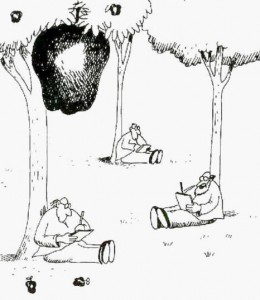I recently wrote an article over at www.B2Bbloggers.com, The Relationship (r)Evolution – How Social Media is Driving Change in the Human Condition which captured the essence of some of my earlier human behavior articles. But while I was writing that piece I came up with, what I believe, is an interesting metaphor for how social media is working with big brands from the customer’s perspective. It is based on the image burned in every GenX soul when the Berlin Wall came down on November 9, 1989. An epic and evolutionary moment in human civilization and culture to be sure.
So what got me thinking was how big brands seem to have built similar “Berlin walls” up around themselves. This is what decades of one way communication and totalitarian control of the brand have accomplished. But how long did we think customers would tolerate this kind of relationship? I mean really, if we think about, we have been in it for ourselves since the beginning.
Watching the walls come down with each swing of the Social Media hammer
So is Social Media the proverbial sledge hammer in the hands of the customer? It just might be. It is certainly allowing them to come together and affect change on the biggest companies in the world; sometimes that change is forced. I mean just look at how Nestle turned it around after getting pummeled on FaceBook.
Think about it. One of the core attractions of Social Media for an individual is the ability to find people who share the same interest, both friends and strangers. Many times, those interests revolve around experiences and many times those experiences are based on relationships with brands – good, bad and indifferent. Social Media unites people and enables them to focus their collective voice to affect change. That is true power for the consumer.
So, with every 140 character comment on your brand, their is a swing of the hammer against your brand wall because even positive comments are going to affect change. Just look at how Starbucks is using the power of their social presence and customer voice to improve their brand, their products and their services.
Change your brand wall into a brand road
So can we actually leverage this to our advantage as companies? Absolutely. But it is going to take a shift in thinking, in strategy and in our approach to our customers. I think a better metaphor for how forward thinking, customer-centric companies can leverage social media is a brand road. A road implies many things; progress, two-ways, going the distance, and most importantly no barriers.
Every time a brick is removed from your brand wall use it to build a road with your customers and remember the lessons learned from November 9, 1989.
Let me know what you think of this post and feel free to disagree or take the idea and run with it in your own way.
Cheers!
Jeff – Sensei




